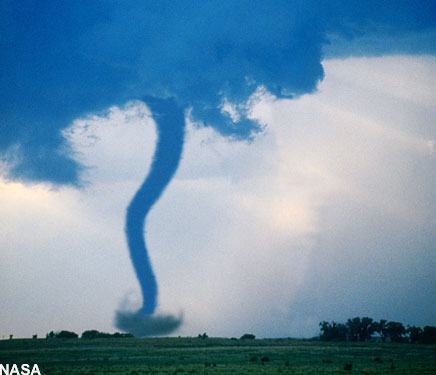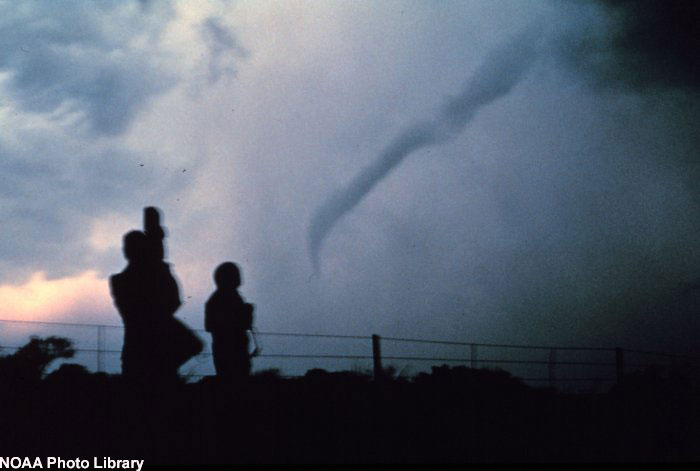Scientist Reading the Leaves to Predict Violent Weather

When meteorologist Edward Lorenz set up his computer to model the weather in 1960, he had no idea what a complex problem he was taking on. After a while, he realized that any small change in the starting conditions of his program had a huge impact on the outcome of his experiment and in predicting the weather.
Popularly called the butterfly effect, this aspect of chaos theory made Lorenz and others realize that predicting weather with pinpoint accuracy will never be possible.
But scientists are getting closer.
And just like the butterfly whose single flapping of a wing on one side of the world might help precipitate a tornado on the other side, a single leaf can have large consequences for the weather.
"How well we are able to represent one leaf in a weather forecast model can be a key to predicting thunderstorms," said Dev Niyogi, an assistant professor of agronomy and earth and atmospheric sciences at Purdue University. "The amount of moisture plants are emitting during photosynthesis may be considered the local trigger that trips fronts into violent weather."
Researchers in plant biology have long used models of photosynthesis to
"We coupled a photosynthesis-based vegetation model to a weather forecast model and tested the improvement one could obtain by this for simulating severe weather situations," Niyogi told LiveScience.
Sign up for the Live Science daily newsletter now
Get the world’s most fascinating discoveries delivered straight to your inbox.
This, combined with improved mapping of soil moisture, allows for better predictions of specific, local events.
"Our results showed that, while the current weather forecast and vegetation models do a fair job in simulating the weather, the results in terms of timing, location and intensity of local-scale thunderstorms can be improved by adopting more detailed photosynthesis transpiration models," Niyogi explained.
These improvements can improve forecasting of factors such as temperature and humidity anywhere from 5 to 50 percent.
"It certainly makes us think, what other factors may be important that we should be considering and how that may improve matters further," Niyogi said.
More about Tornadoes
- Tornado Basics
- Tornado Image Gallery
- Top 10 Killer Tornadoes
- 2006 Tornado Season Off to Roaring Start
- Fresh Twist on When, Where, Why Tornadoes Strike
Other Severe Weather
- Billion Dollar Weather Disasters
- The 100-Year Forecast: Stronger Storms Ahead
- Changes in Vegetation Might Make Severe Weather Worse
- Weather 101: All About Wind and Rain
- The Science of Lightning
- 2006 Hurricane Guide
Image Gallery

Tornado Country











